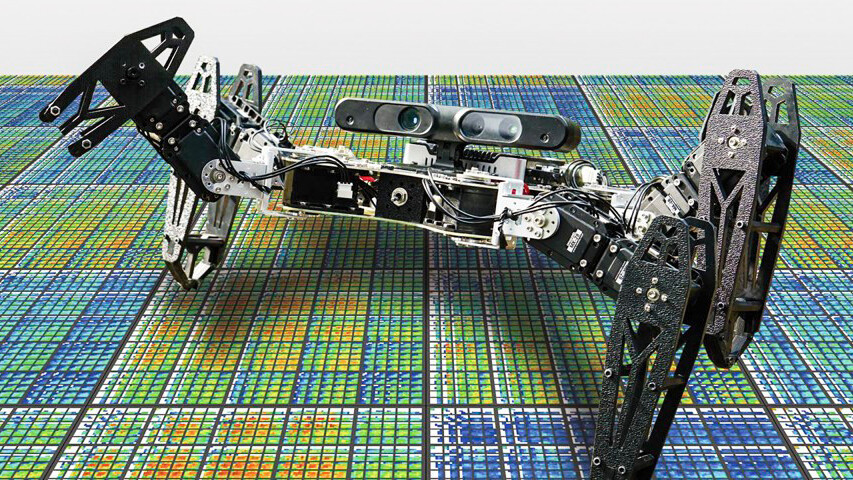
The appeal of using robots resides firmly in the fact they’re far more efficient at most tasks than a human. On the other side of the coin, what keeps them from becoming more of a fixture in our modern lives is their lack of adaptability and the need for constant maintenance.
When a robot breaks, it is no longer capable of doing its job and to keep it from breaking, it requires regular maintenance from a human. Efficiency gains are then minimized, which is exactly why there isn’t a robot serving your frappuccino at the local Starbucks.
This could soon change.
Researchers at Pierre and Marie Curie University in Paris recently penned a study that appeared in the May 28 issue of Nature detailing their findings when attempting to quantify the adaptive “healing” abilities of certain robots. In experiments, a six-legged robot was subjected to intensely abusive environments resulting in damage to several key areas of the body. The researchers found that even with two damaged legs the robot “figured out” how to keep walking.
Until now, healing robots typically relied on expensive sensors designed to self-diagnose damage areas and revert to contingency plans built into their source code. This worked, but only if the designer had the foresight to include this particular contingency in the code. Scientists have also experimented with trial-and-error programming (like BRETT), but found it could take 15 or more minutes for them to adapt and compensate for even the simplest of problems.
The new adaptive technology is inspired by the way animals adapt to injury.
“They have intuitions about different ways to behave,” said Jean-Baptiste Mouret, co-author of the study. “These intuitions allow them to intelligently select a few different behaviors to try out and after these tests, they choose one that works in spite of the injury. We made robots that can do the same.”
When building these robots, there is no pre-built “healing” contingency packed into the source code. Instead, the researchers build the robots to assess several solutions to a problem and then select the best one.
“What we do with the simulator is simply to say ‘find as many different ways to walk as you can,” says Mouret.
Machine learning algorithms and adaptive AI discoveries like these have come a long way in recent years. These self-healing robots could lead the charge for smarter and more efficient technologies to play a bigger role in our day-to-day lives.
➤ Damaged Robot Can “Heal” Itself in Less than 2 Minutes [Live Science]
Image credit: Antoine Cully
Get the TNW newsletter
Get the most important tech news in your inbox each week.





